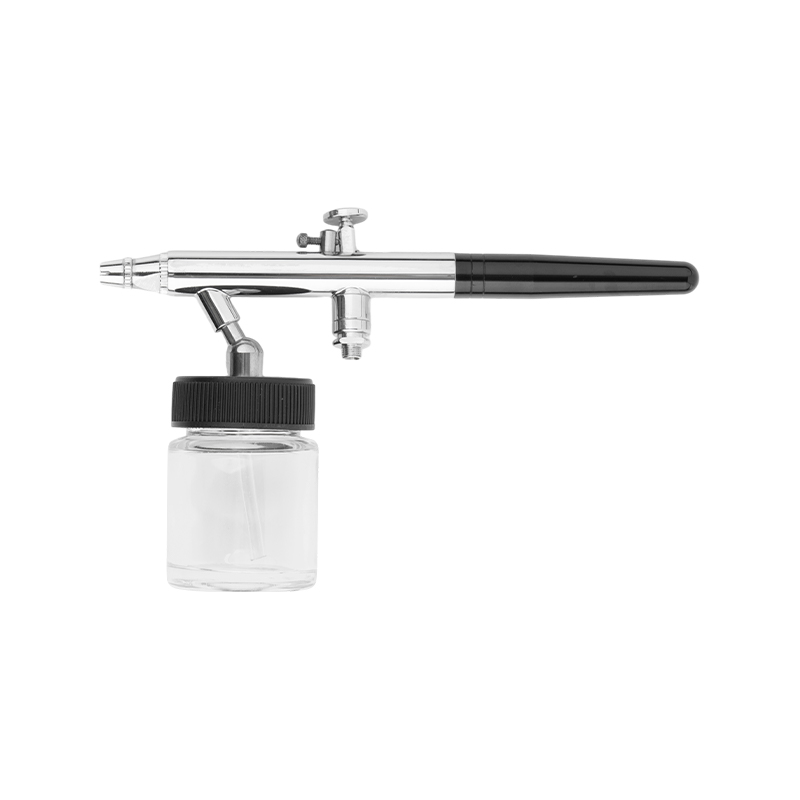TM132 Single action airbrush
Cat:Airbrush
With a length of 140mm, this airbrush is at the ideal balance between portability and operational flexibility. Its compact size makes it easy to carry...
See DetailsPerformance of airbrushs in automotive spraying
Airbrushs are widely used in automotive spraying for the application of primer, midcoat and topcoat of car body paint. In this application scenario, the performance of airbrushs is reflected in their atomization effect, coating uniformity and operational stability. Automotive spraying requires a high surface finish. Airbrushs can form fine atomized particles under appropriate air pressure and spray width adjustment, which helps to achieve uniform coverage and reduce sagging. In addition, modern airbrushs are designed with feel and weight distribution in mind to reduce operator fatigue during long-term use. For different coatings, airbrushs can adapt to coatings of different consistencies by adjusting the nozzle diameter and air pressure, showing good adaptability to ensure that the construction effect is in line with expectations.
Performance of airbrushs in furniture wood spraying
In the furniture manufacturing process, airbrushs are used for primer and topcoat spraying on wood surfaces to improve appearance and durability. Wood spraying requires airbrushs to cover complex corners and curved surfaces evenly, and high-quality airbrushs can achieve delicate spraying effects by precisely controlling the spray width and flow rate. Due to the strong adsorption of wood, the airbrush needs to provide a stable output pressure to make the paint penetrate and adhere more firmly. At the same time, when spraying varnish or color paint, the atomization performance of the airbrush directly affects the smoothness and transparency of the film. The HVLP (high volume low pressure) airbrush commonly used in furniture spraying can improve the utilization rate of the paint while reducing the rebound of the paint mist, showing high economy and convenience of operation.

Performance of airbrushs in metal anti-corrosion coatings
Metal structural parts are widely coated with airbrushs in the construction of anti-corrosion coatings, especially on the surfaces of bridges, ships and large equipment. In this application, the airbrush needs to face the requirements of spraying a large area and thicker coatings, so the spray equipment is required to have a strong paint supply capacity and a long-lasting stable output. In order to cope with outdoor and complex working conditions, the airbrush is usually used with wear-resistant nozzles and thickened pipes to ensure the durability of continuous construction. For different anti-corrosion coatings, such as epoxy paint, polyurethane paint, etc., the airbrush needs to meet the fluidity requirements of different viscosities by changing the nozzle specifications. Its performance is not only reflected in the construction efficiency, but also affects the overall uniformity and protective effect of the anti-corrosion layer.
Performance of airbrushs in building wall coating
The spraying operation of building walls usually involves large-scale construction. In this scenario, the airbrush needs to have high coverage efficiency and strong spraying ability. For water-based coatings such as latex paint, the airbrush can achieve uniform spraying at a relatively low air pressure, reduce paint mist dispersion, and improve the utilization rate of the coating. At the same time, when facing different wall substrates (such as concrete, gypsum board, etc.), the airbrush can adapt to various construction needs by adjusting the spray width and spray angle. In different construction environments of the interior and exterior walls of the building, the airbrush shows good flexibility and operability, which can improve work efficiency and reduce construction time.
Performance of airbrushs in industrial precision spraying
In the surface treatment process of electronic equipment, precision instruments and parts, airbrushs are used to apply protective layers, conductive coatings or functional coatings. Such applications place high demands on the spray uniformity and particle control of the airbrush. High-precision airbrushs can provide fine atomized particles to ensure the thickness consistency of the coating in thin film construction. In addition, some precision spraying needs to be carried out in a constant temperature and dust-free environment, and the airbrush needs to be equipped with automated equipment to achieve a controllable spraying trajectory, showing high construction repeatability. In small-area or local spraying operations, the flexibility and accuracy of the airbrush are important factors affecting the quality of the finished product.
Different application scenarios have different requirements for airbrush performance
Different application scenarios have different performance requirements for airbrushs. For example, automotive spraying pays more attention to the fineness and surface flatness of atomized particles; furniture spraying focuses on corner coverage and transparency; metal anti-corrosion emphasizes thick film construction ability and durability; architectural spraying pays attention to construction efficiency and large-area coverage ability; precision spraying focuses on control accuracy and repeatability. To adapt to these differences, the airbrush has made diversified improvements in structural design, nozzle material, airflow control, etc. By flexibly selecting nozzle specifications and adjusting operating parameters, the airbrush can show corresponding performance in different application scenarios to meet the diverse needs of users.
Comparison of performance of different types of airbrushs in applications
In actual use, there are obvious differences in performance between different types of airbrushs. Common types include gravity airbrushs, suction airbrushs and pressure airbrushs, each with its own characteristics in terms of paint supply method and applicable scenarios. Gravity airbrushs are suitable for fine spraying, suction airbrushs are stable in large-area construction, and pressure airbrushs are more suitable for continuous spraying of high-viscosity paints. The following table shows the main performance characteristics of different types of airbrushs in various application scenarios:
| Airbrush Type | Applicable Scenarios | Performance Characteristics |
|---|---|---|
| Gravity Airbrush | Automotive painting, furniture painting | Fine atomization, suitable for small-area high-quality spraying |
| Suction Airbrush | Building walls, large-area coating | Larger paint capacity, higher construction efficiency |
| Pressure Airbrush | Metal anti-corrosion, industrial coating | Capable of spraying high-viscosity coatings, suitable for continuous operation |
Contact Us